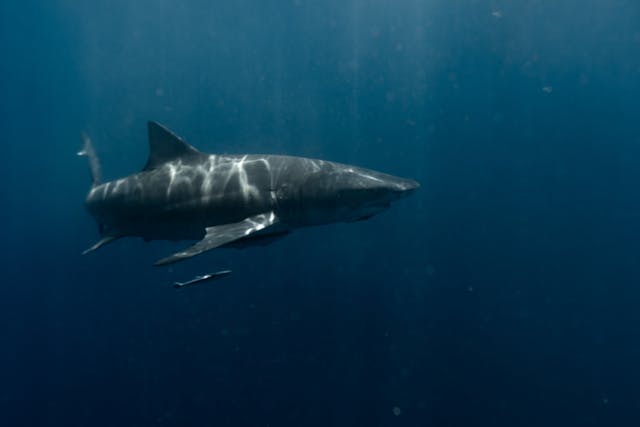How old was Richard Dreyfuss in Jaws? Discover his exact age during filming, career context, behind-the-scenes insights, and enduring legacy.
Richard Dreyfuss was born on October 29, 1947. Jaws premiered in June 1975, and most of the filming took place between May and October 1974. That means Dreyfuss was 26 turning 27 during production, and 27 at the time the film hit theaters.
It’s easy to assume he was older, on screen, he carried himself with the confidence of someone who’d been doing this for decades. But in truth, his age gave him a particular kind of edge: fresh-faced curiosity paired with a willingness to challenge authority. That blend made his portrayal of marine biologist Matt Hooper both believable and magnetic.
What You'll Discover:
Why That Number Matters More Than You Think
Fresh Eyes in a Sea of Authority
Being 27 wasn’t just about having youthful energy, it allowed Dreyfuss to stand apart from his co-stars. Positioned between a hardened police chief and a grizzled shark hunter, his Hooper brought a scientific clarity that cut through the chaos. He wasn’t burdened by the world-weariness of older characters; instead, he came armed with facts, data, and the confidence of someone who believed solutions were possible.
A Catalyst for Breakout Stardom
Jaws wasn’t Dreyfuss’s first film, but it was the one that catapulted him into global recognition. His previous roles had shown promise, but Hooper gave audiences a character who was both relatable and aspirational, a man who cared about doing things right, and who refused to be intimidated by either the ocean’s dangers or the strong personalities around him.
Filming Context: Youth Amid Chaos
The making of Jaws was far from smooth. The mechanical shark constantly malfunctioned, forcing the director to rely more on atmosphere, tension, and the cast’s performances than on the creature itself. This demanded that every actor carry their scenes without leaning on spectacle.
Dreyfuss’s Hooper didn’t dominate through brute force or bravado. Instead, his power came from sharp observation, quick thinking, and a readiness to challenge the status quo. His age made that combination of enthusiasm and defiance believable, he was old enough to be respected, young enough to still take risks.
The Surprise Factor
Many fans are stunned when they learn Dreyfuss was only 27 during Jaws. The role feels older. Hooper comes across as seasoned, someone who’s been around long enough to understand the stakes. That’s the acting magic, being able to project experience without actually having lived all of it yet.
There’s also a psychological element here. When a young person holds their own among more senior figures, it creates a natural tension. We wonder if they’ll crack, falter, or prove themselves. Hooper’s arc is satisfying because he’s tested, and he delivers.
A 27-Year-Old in the Epicenter of Hollywood Blockbuster
Youth Anchored in Serious Artistry
At 27, Dreyfuss already had a knack for layering his performances. Hooper wasn’t a flat archetype; he was playful, stubborn, brilliant, and a little impulsive. That mix gave him humanity and kept audiences invested.
His ability to balance humor and intensity helped Jaws maintain its pacing. In a film where death loomed at every turn, Hooper’s lighter moments didn’t undercut the danger, they made it more human.
Real-World Resonance
Think about being in your late twenties. You’ve learned enough to trust your instincts, but you’re still discovering what you’re truly capable of. That’s where Dreyfuss was in life, and that’s exactly the energy Hooper brought to the Orca. It’s a reminder that sometimes the right person for the job isn’t the most experienced, but the one most willing to throw themselves into the storm.
Behind the Scenes: A Snapshot of Youth in Storm
Chemistry with the Director
Dreyfuss and the young director formed a natural creative bond. Both were in the early stages of careers that would later become legendary, and that mutual ambition translated on screen. Hooper felt alive because the man playing him was working in a space of fearless experimentation.
Holding His Own Among Veterans
Sharing the screen with older, more established actors could have been intimidating. Instead, Dreyfuss leaned into the contrast. His youth became part of the story, Hooper was the one with the latest science, the freshest perspective, and no patience for outdated thinking. That dynamic charged every scene he was in.
Long-Term Echoes of Being 27 in Jaws
Career Momentum Built on a Youthful Role
After Jaws, Dreyfuss moved into roles that solidified him as one of Hollywood’s most versatile actors. His work in the film showed that he could anchor a blockbuster without losing his individuality. That’s not easy at any age, but at 27, it’s remarkable.
Enduring Legacy Anchored in Early Humility
Nearly five decades later, audiences still remember Hooper not just for what he did, but for who he was, an intelligent, principled man willing to stand up for the truth, even when the stakes were life and death. That resonance comes partly from the authenticity Dreyfuss brought at such a formative age.
Why This Age Detail Sticks With People
The fascination with Dreyfuss’s age in Jaws isn’t just about trivia. It’s about seeing how much someone can accomplish early in their career, and how youth, when paired with focus, can leave a mark that lasts for generations. It also challenges the stereotype that wisdom and credibility only come with age. In Jaws, credibility came from capability.
Key Takings
- Exact Age: Richard Dreyfuss was 26–27 during filming and 27 when Jaws was released.
- Youth as Strength: His age added an approachable, energetic intelligence to Matt Hooper.
- Career Breakthrough: The role launched him from promising actor to international star.
- Authenticity in Performance: He blended curiosity, defiance, and humor into a believable hero.
- Lasting Legacy: Hooper remains one of the most memorable characters in blockbuster history.
- Behind-the-Scenes Impact: His youthful perspective meshed perfectly with the film’s innovative spirit.
- A Lesson Beyond Film: Credibility comes from ability, not just years lived.





